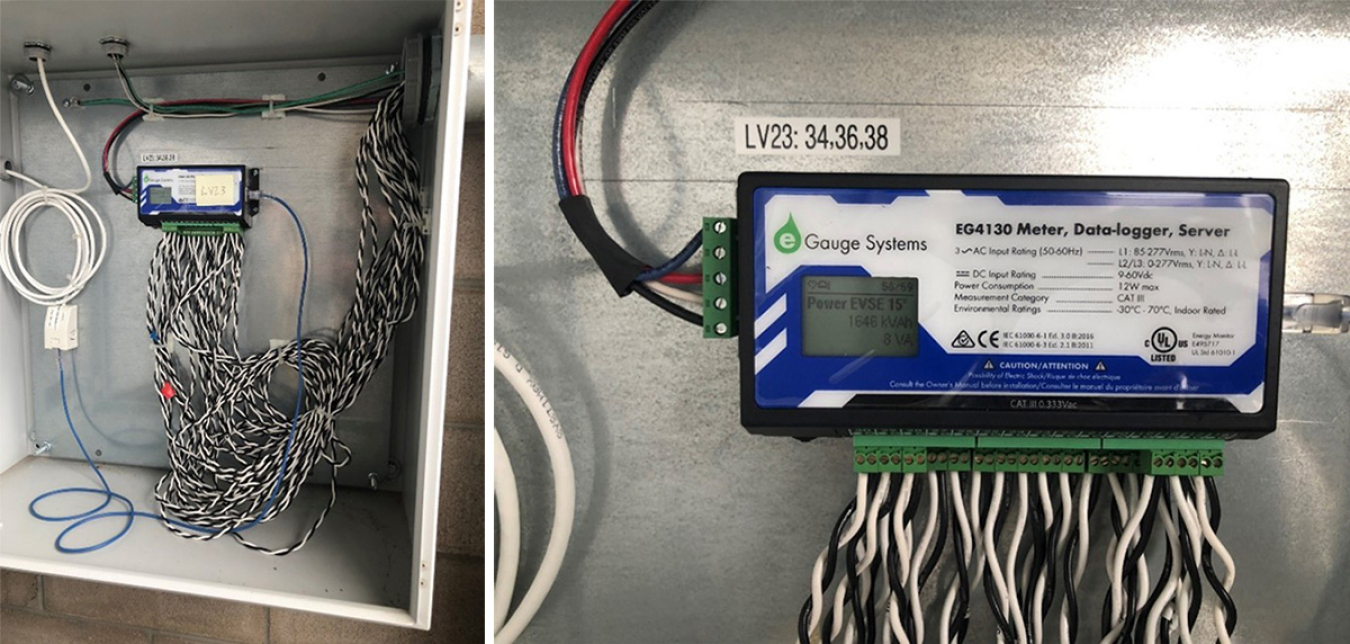As of July 2023, the National Renewable Energy Laboratory (NREL) has 128 Level 2 electric vehicle (EV) charging stations installed on its campuses, with plans to install more. All EV charging stations at NREL are submetered.
NREL uses eGauge Systems submeters to measure each individual circuit to track the usage at each electric vehicle supply equipment (EVSE) port. The submeters are networked and provide utility grade data that feeds into an Energy Management Information System (EMIS). This gives NREL the ability to separate the electricity use of the EV charging stations from the building so they can be removed from the building intensity calculations.

NREL eGauge Systems submeters in the South Table Mountain parking garage.
NREL EV Charging Station Location Summary
- South Table Mountain campus parking garage: 108 level 2 networked EV charging stations, open to use by both fleet and privately owned vehicles (POVs).
- South Table Mountain campus Research Support Facility: Four level 2 non-networked EV charging stations, restricted to use by fleet vehicles only.
- Flatirons Campus: 16 level 2 networked EV charging stations at the Flatirons Campus, open to use by both fleet and POVs.
Only four of the 128 EV charging stations are not networked. The networked stations at NREL have built-in data management and metering capabilities, enabling real-time tracking of EV charging station electricity usage. At the networked stations, users can initiate and pay for their charging sessions conveniently through a phone app, which is managed by the EV charging station provider.
Key Lessons Learned for Federal Sites
For federal sites contemplating a similar implementation, NREL offers valuable insights:
- Incorporate metering in initial designs: In new construction projects, consider integrating metering from the outset. Complex metering may benefit from an architectural metering plan. Installing meters during construction is more cost-effective than retrofitting buildings.
- Commission metering: Ensure metering commissioning is part of any new meter installation to verify correct installation and prevent wiring issues.
- Match metering to needs: Tailor metering solutions to specific data requirements, avoiding unnecessary expenses on excessive capabilities or later replacements.
- Check network compatibility: When purchasing networked EV charging stations, confirm that the standard interface can communicate with the EMIS. Proprietary cloud service data plans may pose challenges in data integration.

